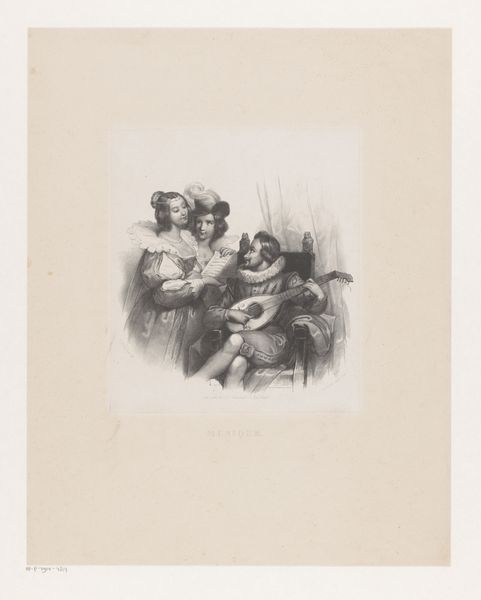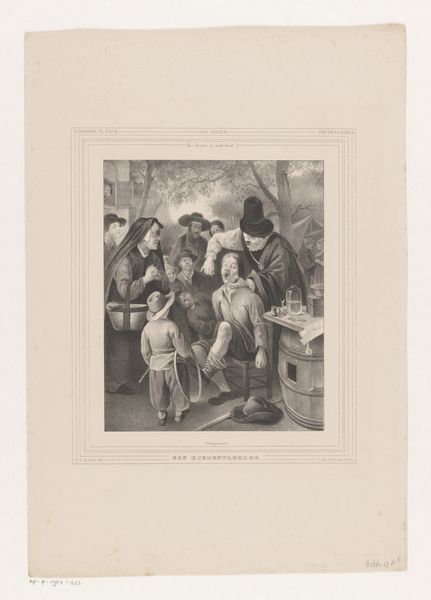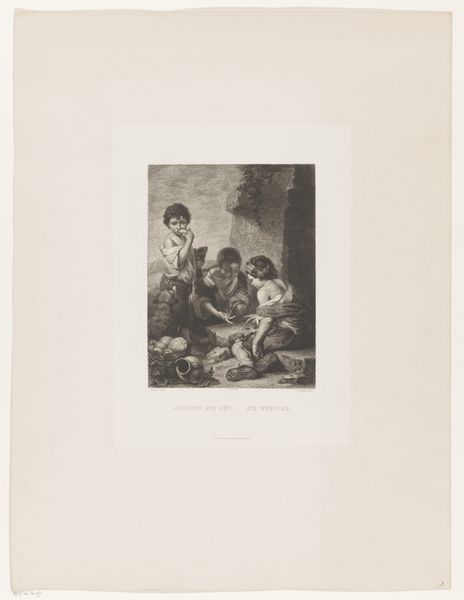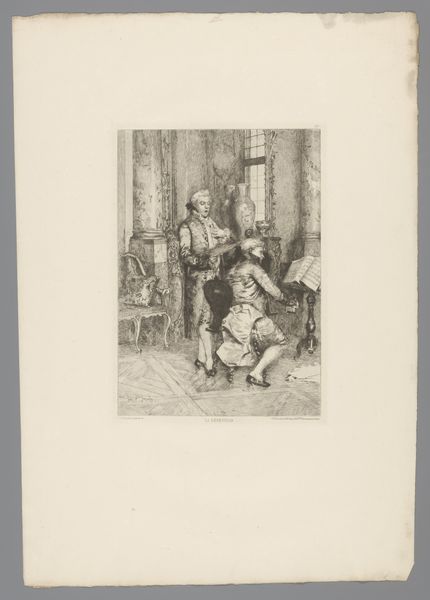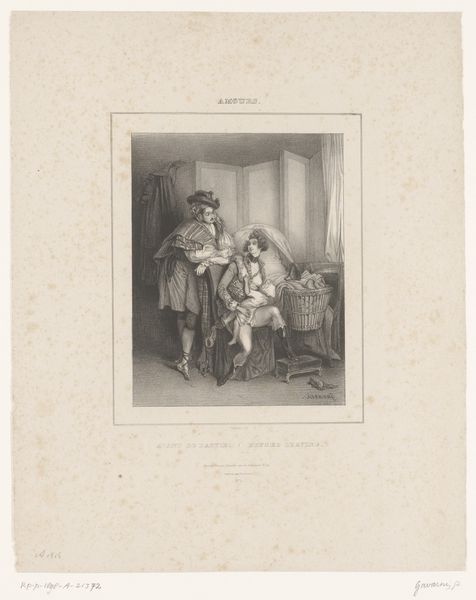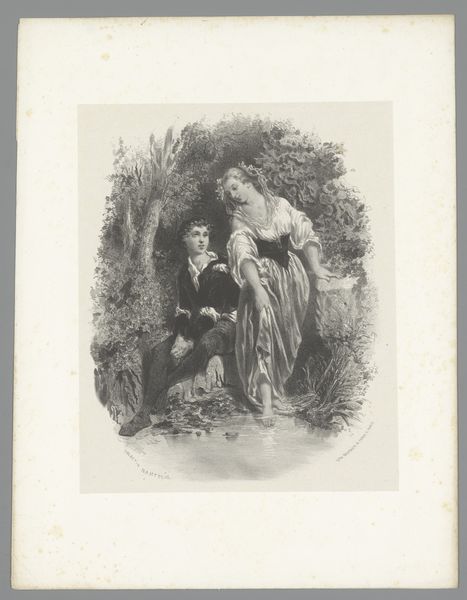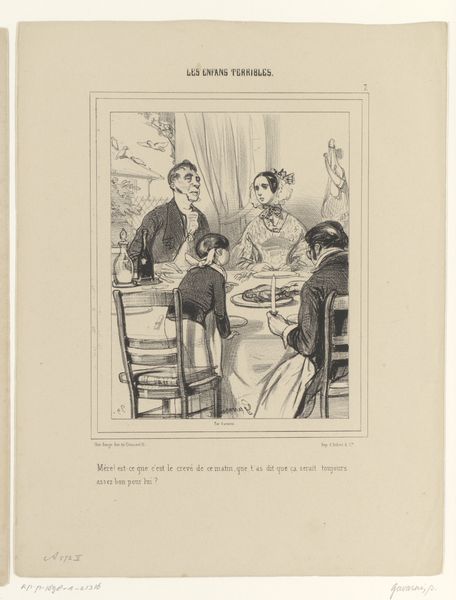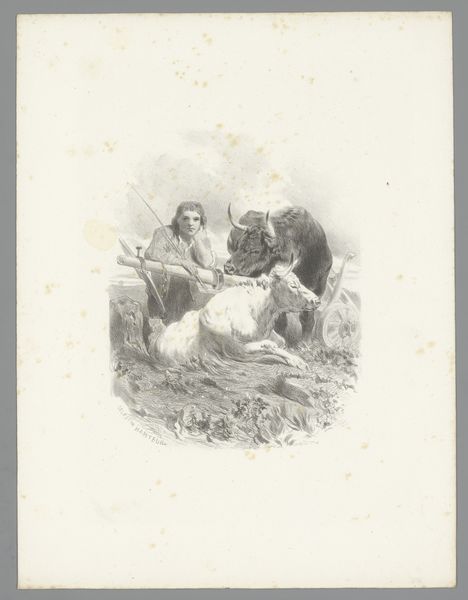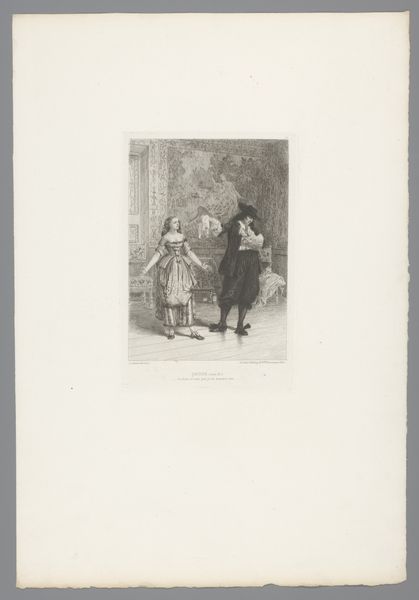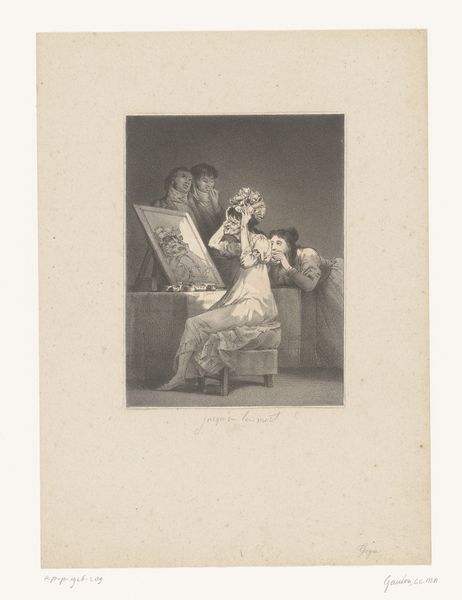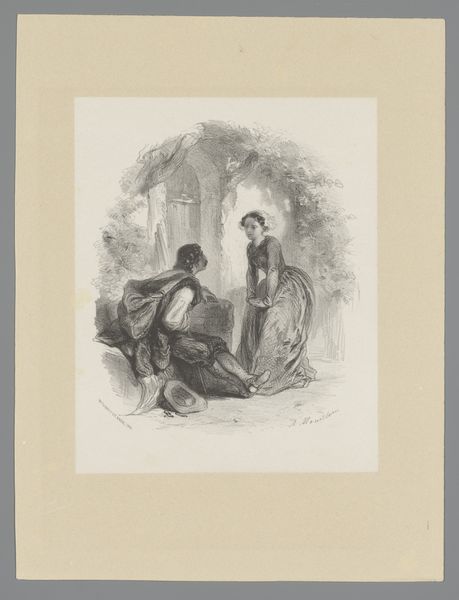
drawing, print, etching, paper, pencil
#
pencil drawn
#
drawing
#
light pencil work
#
narrative-art
# print
#
etching
#
pencil sketch
#
figuration
#
paper
#
romanticism
#
pencil
#
line
#
pencil work
#
watercolour illustration
#
genre-painting
Dimensions: height 361 mm, width 272 mm
Copyright: Rijks Museum: Open Domain
Editor: This etching by Célestin Nanteuil, called "Bruiloftsgasten en de bruid aan de dis," or "Wedding Guests and the Bride at the Table," created sometime between 1823 and 1873, shows a crowded wedding feast. I find the rough quality of the print, the visible lines, quite striking. What can you tell me about it? Curator: This piece draws our attention to the material conditions of image production. Consider the etching process itself: the labor involved in incising the plate, the materials used – the acid, the paper, the press. Doesn’t it challenge the notion of art as purely an intellectual or aesthetic pursuit? How do you think the mass production potential of etching might have impacted art consumption in the 19th century? Editor: It democratized it? Allowed for wider circulation? Curator: Precisely! The print medium made images affordable, transforming access and impacting the status of art objects. Consider how prints also played a key role in disseminating political ideas, particularly amongst the working class. Does examining it in this light influence your interpretation? Editor: Definitely. Seeing the art production process is usually invisible to the naked eye, however here it's apparent. I was stuck on the figures depicted, without realizing how that was less relevant. It's a copy made with ink to be shared and sold... almost disposable. Curator: Exactly. We see the wedding celebration, but it leads us back to labor, materiality, and even potential consumerism behind its very creation. It reframes our understanding. Editor: It is really eye opening how considering the production challenges those traditional distinctions we make between 'art' and something simply functional! Thanks for this fresh way of thinking about it! Curator: It's my pleasure. Seeing art in this way is simply looking past its face value.
Comments
No comments
Be the first to comment and join the conversation on the ultimate creative platform.

